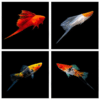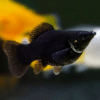To provide the best experiences, we use technologies like cookies to store and/or access device information. Consenting to these technologies will allow us to process data such as browsing behaviour or unique IDs on this site. Not consenting or withdrawing consent, may adversely affect certain features and functions.
The technical storage or access is strictly necessary for the legitimate purpose of enabling the use of a specific service explicitly requested by the subscriber or user, or for the sole purpose of carrying out the transmission of a communication over an electronic communications network.
The technical storage or access is necessary for the legitimate purpose of storing preferences that are not requested by the subscriber or user.
The technical storage or access that is used exclusively for statistical purposes.
The technical storage or access that is used exclusively for anonymous statistical purposes. Without a subpoena, voluntary compliance on the part of your Internet Service Provider, or additional records from a third party, information stored or retrieved for this purpose alone cannot usually be used to identify you.
The technical storage or access is required to create user profiles to send advertising, or to track the user on a website or across several websites for similar marketing purposes.
 Red Devil Vampire Crab - Geosesarma Hagen - Decapod Crustacean
1 × £8.71
Red Devil Vampire Crab - Geosesarma Hagen - Decapod Crustacean
1 × £8.71  Assorted Colour Vampire Crab Geosesarma Sp 2-3Cm
1 × £8.71
Assorted Colour Vampire Crab Geosesarma Sp 2-3Cm
1 × £8.71 











Emily Carter (verified owner) –
I recently added 4 Red Swordtails to my aquarium, and I couldn’t be happier! These little guys are not only vibrant and beautiful, but they have also brought a delightful energy to my tank. After about two weeks, I’ve seen them adapt seamlessly to their new home, swimming happily around my live plants and even showing off their stunning fins. Compared to other livebearers I’ve had, like mollies and platies, the Swordtails seem to have a more playful personality. They interact with each other and even come up to the glass when I’m near, which makes me feel connected to them.
One thing to note is that they thrive in slightly warmer water, so make sure your setup is right for them. I also appreciate that they arrived healthy and active, thanks to careful packaging during shipping. If you’re looking for a lively addition to your aquarium, I highly recommend these Swordtails. They’d be perfect for both beginners and seasoned aquarists alike. I’ll definitely be purchasing more in the future!